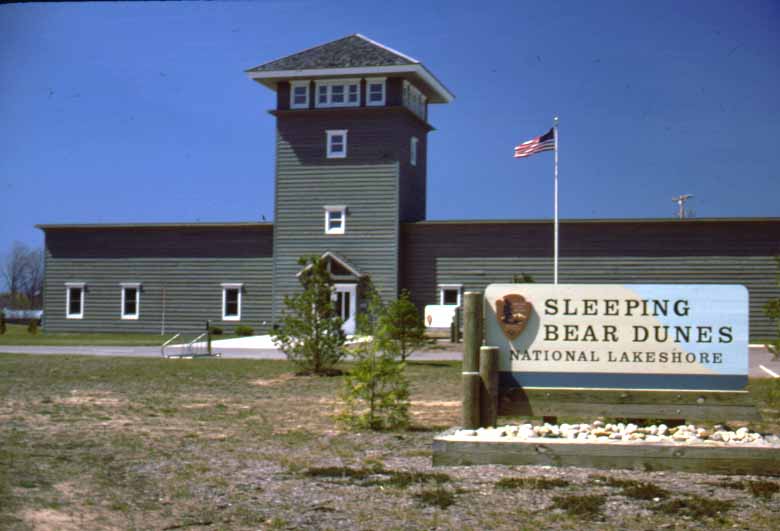
The Sleeping Bear Dunes get their name from a Chippewa
Indian legend that tells of a mother bear and her two cubs who were forced
into Lake Michigan while fleeing a forest fire. The mother bear reached
the shore and climbed to the top of the bluff to wait for her children,
but the two cubs had drowned. Today, according to legend, the Sleeping
Bear Dunes are where the mother bear waited, while the Manitou Islands
are her two cubs.

The Sleeping Bear Dunes offer visitors a wealth of
opportunities to enjoy the outdoors. There are numerous nature trails
to hike and beaches to walk. Fishing, hunting, camping, canoeing,
and (come winter) cross country skiing can all be done at the lakeshore.
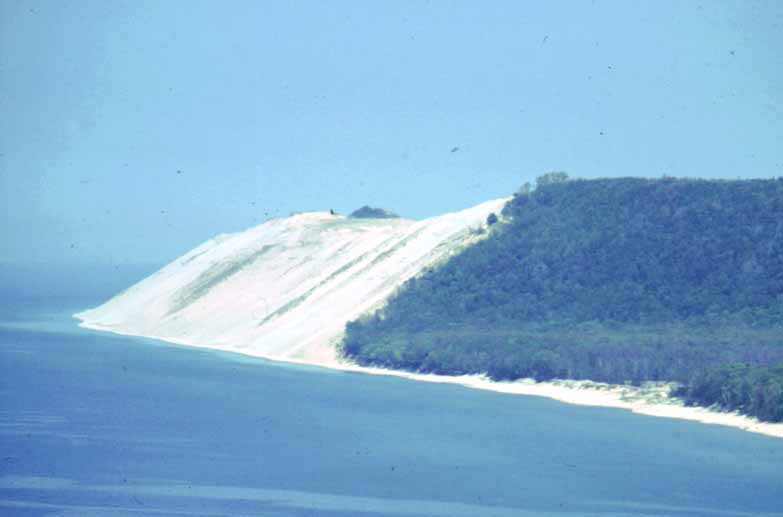
One of the main attractions of the area is the dune
climb. Visitors mount the shifting sands of the dunes. The
350 foot climb is strenuous, but fun for everyone, while the view from
the top is incredible.
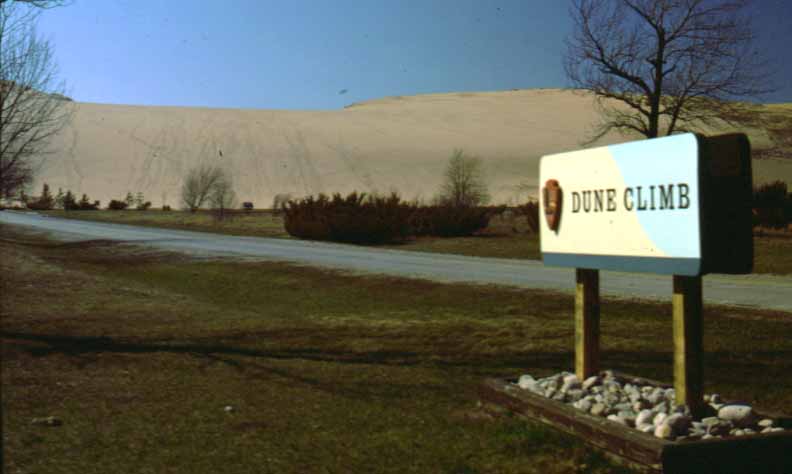
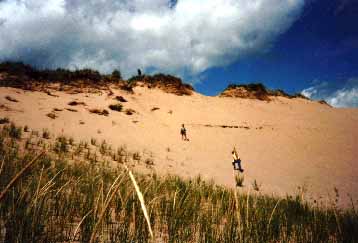
The Sleeping Bear Dunes National Lakeshore covers
72,000 acres including roughly four square miles of dunes. The seven-mile
Pierce Stocking Scenic Drive offers views of the Dunes, Glen Lake, and
Lake Michigan. Other attractions include the Maritime Museum and
Cannery, three former coast guard facilities, and an 1871 lighthouse.

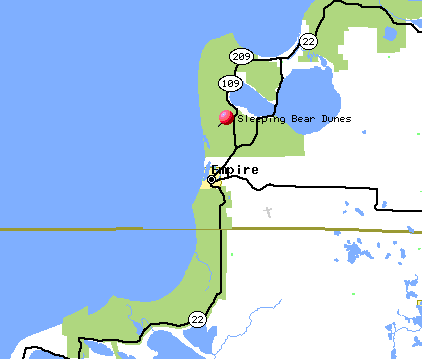
National Park Service: Sleeping Bear Dunes: project..nps.gov/slbe/
Great Outdoors Recreation: Sleeping Bear Dunes:
project..gorp.com/gorp/resource/us_ns/mi_sleep.htm